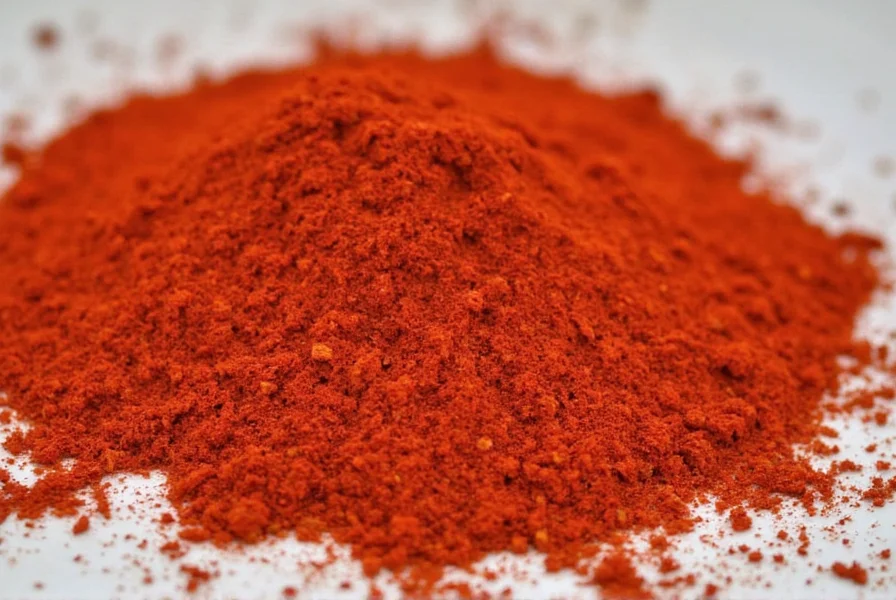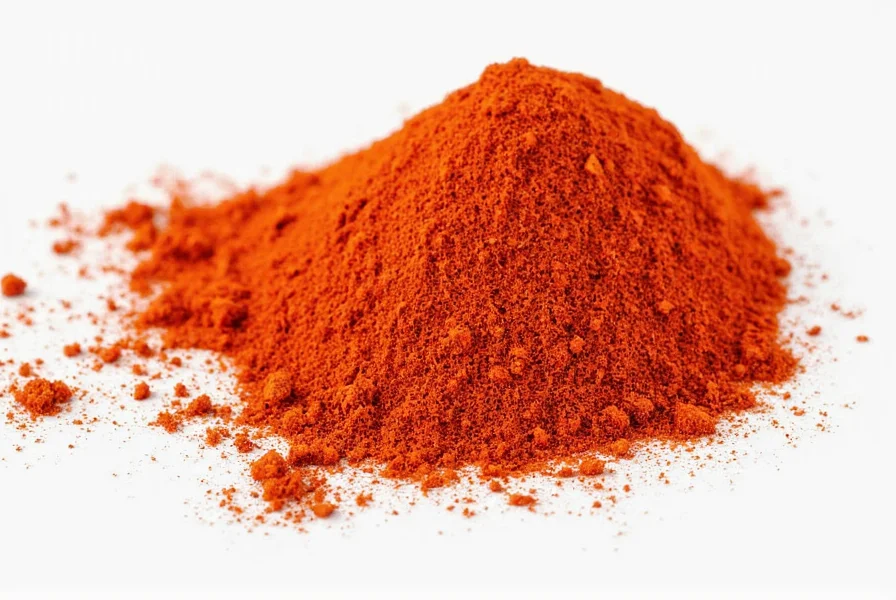Table of Contents
- Introduction
- What Is Paprika?
- Why Do We Add Salt to Spices?
- Paprika and Salt: A Taste Test
- Scientific Explanation of Flavor Enhancement
- How Much Salt to Use with Paprika?
- Creative Ways to Use Paprika Without Salt
- Frequently Asked Questions
- Buying Guide for Paprika Products
- Conclusion
Introduction
No, paprika does not technically need salt to have taste. However, salt enhances its flavor by reducing bitterness and amplifying savory notes. This guide explains why salt works with paprika, how much to use, and salt-free alternatives to maximize flavor without sodium. Whether you're a chef or home cook, you'll learn the science behind flavor enhancement and practical tips for using paprika effectively.

What Is Paprika?
Paprika is made from dried and ground peppers in the Capsicum annuum family — yes, the same family as bell peppers and chili peppers. The flavor can range from sweet and mild to hot and smoky, depending on the variety used.
| Variety | Flavor Profile | Common Uses |
|---|---|---|
| Sweet Hungarian Paprika | Mild, earthy, slightly sweet | Goulash, stews, rice dishes |
| Smoked Spanish Paprika (Pimentón) | Earthy, smoky, rich | Chorizo, paella, grilled meats |
| Hot Paprika | Spicy, pungent | Spicy sauces, marinades, soups |
What Makes Paprika Unique?
- Contains natural antioxidants like vitamin E and carotenoids
- Adds vibrant color without overwhelming heat
- Can enhance both savory and subtly sweet dishes

Why Do We Add Salt to Spices?
Salt isn't just about making things taste salty — it plays a crucial role in balancing flavors. It suppresses bitterness, enhances sweetness, and amplifies umami. When added to spices like paprika, salt might make certain flavor compounds more perceptible.
Let's break down what's happening when you sprinkle salt alongside paprika:
- Bitterness Reduction: Some people find paprika has a slight bitter edge. Salt helps mask that bitterness.
- Flavor Activation: Salt can draw out aromatic oils in spices, potentially making their flavor more pronounced.
- Texture Contrast: In rubs or seasoning blends, salt adds texture and helps distribute the spice evenly.
Paprika and Salt: A Taste Test
To answer the big question, we did a simple side-by-side taste test:
- Pinch of plain paprika — tasted subtle, a bit dusty, with hints of pepperiness.
- Pinch of paprika + tiny pinch of salt — noticeably more rounded, savory, and complex.
- Paprika sprinkled over scrambled eggs (no added salt) — nice color but lacked depth.
- Paprika + salt over scrambled eggs — richer flavor, better mouthfeel, and more satisfying overall.
Results at a Glance
| Test | Taste Description | Verdict |
|---|---|---|
| Pure Paprika | Mild, earthy, slightly bland | Needs something extra |
| Paprika + Salt | More robust, balanced, enhanced aroma | Clearly improved |
| Eggs with Paprika Only | Visually appealing but flat | Incomplete flavor profile |
| Eggs with Paprika + Salt | Creamy, rich, and flavorful | Most satisfying combo |
Scientific Explanation of Flavor Enhancement
You might be surprised to learn that salt does more than just make things salty. From a scientific standpoint, here's what happens when you mix salt and paprika:
- Sodium's Role: Sodium ions interact with our taste buds, making them more receptive to other flavors.
- Volatilization: Salt can increase the volatility of some flavor compounds in paprika, allowing us to smell and taste them more easily.
- Salting Out Effect: Salt helps release essential oils and aromatics in paprika, intensifying its presence on the palate.
This doesn't mean paprika needs salt to have any flavor — just that salt can help unlock and balance the flavor it already has.
How Much Salt to Use with Paprika?
Balance is key. Too much salt can overpower the delicate nuances of paprika, especially sweeter varieties like Hungarian paprika. Here's a handy guide:
| Dish Type | Recommended Salt Ratio | Tips |
|---|---|---|
| Dry Rubs | 3 parts salt to 1 part paprika | Mix well for even distribution |
| Stews/Soups | 1 tsp salt per 1 tbsp paprika | Add toward end of cooking |
| Vegetable Dishes | Light sprinkle after roasting | Enhances caramelization and spice notes |
| Marinades | Adjust based on liquid content | Use coarse salt for slow-dissolve effect |
Creative Ways to Use Paprika Without Salt
Want to enjoy paprika without adding salt? No problem! Try these tricks to boost flavor naturally:
- Toast the Paprika: Lightly heating paprika in a dry pan releases more aroma. Be careful not to burn it!
- Pair with Acid: A squeeze of lemon or splash of vinegar can brighten up paprika's flavor without needing salt.
- Combine with Garlic or Onions: These ingredients add natural savoriness (umami) that complements paprika beautifully.
- Use in Oil-Based Dishes: Infuse olive oil with paprika for a rich, aromatic base. Drizzle over vegetables or pasta.
- Smoke It: If you're using smoked paprika, you get a built-in complexity that mimics some of the depth salt brings.
Frequently Asked Questions
Does paprika have flavor on its own?
Yes, paprika does have its own flavor profile — ranging from sweet and mild to hot and smoky depending on the variety. However, its flavor is relatively subtle compared to stronger spices like cumin or chili powder, which is why many people find it benefits from salt or other flavor enhancers.
Why does salt make paprika taste better?
Salt enhances paprika's flavor in several ways: it suppresses any slight bitterness, amplifies the savory elements, helps release the spice's aromatic oils, and makes the flavor compounds more perceptible to our taste buds. Scientifically, sodium ions interact with our taste receptors, making them more receptive to paprika's subtle flavor notes.
Can I use paprika without salt?
Absolutely. While salt enhances paprika's flavor, it's not strictly necessary. You can bring out paprika's best qualities through other methods like toasting the spice, pairing it with acidic ingredients, combining it with umami-rich foods like garlic or tomatoes, or using it in oil-based preparations. Smoked paprika varieties often have enough depth on their own.
What are good alternatives to salt when using paprika?
Great salt alternatives for enhancing paprika include: citrus juice or vinegar (for brightness), garlic or onions (for natural umami), tomato products (for depth), smoked ingredients (if not using smoked paprika), and quality olive oil (to extract and carry flavor compounds).
How much salt should I use with paprika?
The ideal ratio depends on your dish. For dry rubs, try 3 parts salt to 1 part paprika. In soups and stews, use about 1 teaspoon of salt per tablespoon of paprika. For roasted vegetables, a light sprinkle of salt after roasting works best. Always remember to taste as you go, as too much salt can overwhelm paprika's delicate flavor.
Does all paprika need salt equally?
No, different paprika varieties respond differently to salt. Sweet Hungarian paprika often benefits most from salt as it's very mild. Smoked Spanish paprika (Pimentón) has such complex flavor that it often needs less salt. Hot paprika varieties may require less salt since the heat provides its own intensity. The dish you're making also affects how much salt is needed.
Can I enhance paprika's flavor without adding sodium?
Yes! Try these sodium-free techniques: lightly toast paprika in a dry pan before use, infuse it in warm oil, pair it with acidic ingredients like lemon juice, combine with naturally umami-rich ingredients like mushrooms or tomatoes, or use smoked paprika for built-in complexity. Roasting vegetables before adding paprika also creates natural caramelization that enhances the spice's flavor.
Buying Guide for Paprika Products
Not all paprikas are created equal. Here's a breakdown of top options to consider, based on use case, flavor profile, and value:
| Product | Features | Best For | Pros & Cons |
|---|---|---|---|
| McCormick Sweet Hungarian Paprika | Mild, consistent flavor; widely available | Everyday cooking, baking, light seasoning | Pros: Affordable, versatile. Cons: Not very intense flavor. |
| La Chinata Smoked Paprika (Pimentón de La Vera) | Rich, smoky, deep red color | Charcuterie, barbecue, hearty stews | Pros: Premium quality, excellent aroma. Cons: Higher price point. |
| Kalustyan's Hot Turkish Paprika | Medium-hot with bold pepper flavor | Spicy dips, soups, and sauces | Pros: Authentic taste, good heat level. Cons: Can vary in grind coarseness. |
| Simply Organic Paprika (Non-GMO) | Organic certified, sustainably sourced | Health-conscious cooking, wellness meals | Pros: Clean label, eco-friendly. Cons: Slightly milder than conventional brands. |
| Trader Joe's Paprika | Affordable, standard grind | Weeknight meals, basic seasoning | Pros: Budget-friendly, reliable. Cons: Limited flavor dimension. |
Pro Tips for Storing Paprika
- Store in a cool, dark place — light and heat degrade flavor.
- Use within 6–12 months for best potency.
- Keep away from moisture to avoid clumping.
Conclusion
So, does paprika need salt to have taste? Technically, no — paprika has its own unique flavor profile. But in practice, salt often enhances paprika's aroma and balances its sometimes-muted notes. Whether or not to use salt depends on the dish, your dietary preferences, and how pronounced you want the flavor to be.
Remember, paprika is a spice that shines when paired thoughtfully. You don't always need salt — try acid, oil, smoke, or natural umami boosters like garlic or tomatoes instead. Experiment, taste, and find your perfect paprika balance.
Happy spicing!











 浙公网安备
33010002000092号
浙公网安备
33010002000092号 浙B2-20120091-4
浙B2-20120091-4